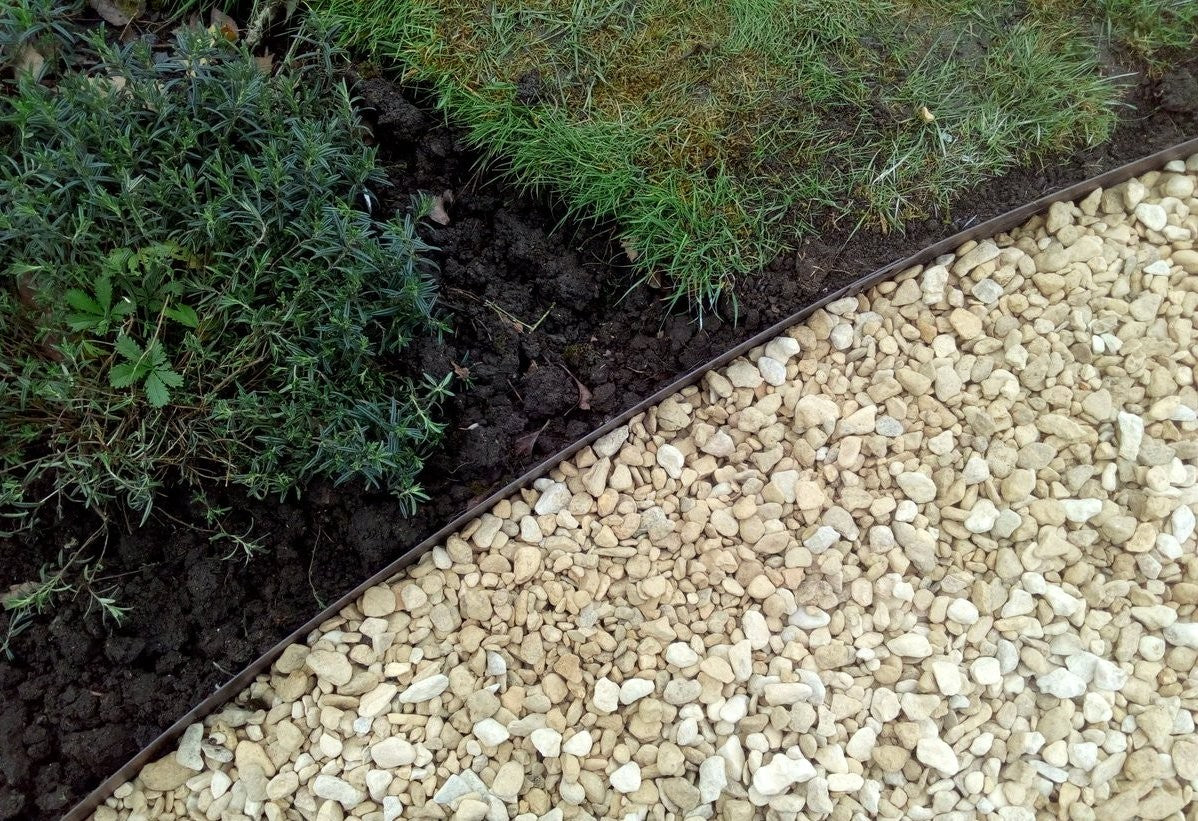How To Install Lawn Edging

Lawn edging – all you need to know
Most people know that a lawn needs regular watering, trimming, and mowing in order to keep it well maintained. Lawn edging, however, is commonly overlooked as a key maintenance task, when in fact, it is the perfect way to keep your garden in top shape.
What is lawn edging?
Edging is the process of separating your lawn from other parts of your garden such as flowerbeds. By creating distinct lines, edging will elevate the look of your grass or borders, encouraging turf, soil or gravel to stay within the lines.
Crisp, precise borders can be tricky to get right and maintain by hand, which is why plastic or metal edging strips can be incredibly useful. These products can be a great way to boost and define your edges and reduce the amount of time spent with a half-moon edger.
Whether you go for straight or curved lines, edging a lawn correctly will give your garden a neat and elegant look.
Why use a lawn edging product
One of the simplest ways to reduce garden maintenance is to install lawn edging. Not only will you save yourself time and hassle, but lawn edging will keep your garden flower beds and lawn looking aesthetic all year round. Without lawn edging you will be manually edging the lawn every few weeks just to stop the grass from encroaching into your flower beds.
To mow or edge first?
Mowing and edging are integral to achieving a great garden, but you might be wondering which should be done first. Whilst there is no right order when it comes to mowing and edging, most people would advise mowing first, especially if your lawn is overgrown and full of weeds. A thick layer of grass will make it harder to edge, so scarifying as well to ensure that all lawn debris and thatch build up is removed before installation. By mowing first, you will be cleaning up the bulk of the lawn making it easier to see what you are doing.
When is the ideal time to edge your lawn?
There is no set time of year to edge your lawn, however there a few things to take into consideration.
Edging your lawn in summer can be tricky because it will be harder to push the edger into dry soil. You could irrigate the lawn, to make the ground softer, prior to edging but do not use an electric edger on moist soil. Similarly, the winter months will prove to be problematic due to frost, snow, and frozen ground. It is therefore advisable to edge your lawn in the spring season. The climate level and the soil moisture level will be suitable at this time of year.
How to lay lawn edging
Always refer to the product instructions before installing the edging. Below is a general guide for how to install lawn edging.
-
Plan your edging
Mark out and measure the border you want to edge. This will give you an idea on what length of edging you will need to buy.
-
Time to dig
For a standard size trench, you will need to dig a trough about six inches deep along the entire border. Use a spade or a trowel but you may need a specialist border tool if the ground is solid. Aim for sharp, precise cuts with no dirt crumbling from the turf.
-
Install the edging
You may need to cut the strip to the required length. If you are joining strips together, make sure each connector is evenly distributed in both pieces of edging, rather than being pushed into one during the connection. Place the strip of edging into the trench, making sure only the very top is visible. Once set, this will be enough to stop grass and weeds creeping into the flowerbed but not high enough that it will obstruct your lawnmower. This is why most lawn edging sticks up approximately 3mm above the soil level. If you have particularly unstable or loosely compacted soil, it would be beneficial to utilise lawn edging reinforcement, such as the EverEdge Pin & Sleeve System.
-
Pull down the soil
Once the edging has been laid in place, use your hands to shift loose soil up against the edging. Pay particular attention to any curved areas and continue to pull down more soil to make sure the edging is held firmly in place.
-
Hammer in the stakes
Starting approximately three inches from the end of the strip, start hammering the stakes into the edging from the flowerbed side. Try and get the stakes as close to a 90-degree angle to the edging as possible. Please note that if the stakes are hammered straight down, then you risk frost heaving them upwards in colder temperatures. Try and place the stakes approximately every seven inches along the strip.
-
Compact the lawn
On the flowerbed side of the edge, push and tread soil up to just over halfway the height of the edging strip. Identify any gaps on the lawn side and fill in with soil. Water the soil on both sides and then top with earth ensuring both sides are flat and level.
What types of lawn edging do we have available?
Amenity Choice stock two main types of lawn edging, EverEdge and Rite-Edge.
EverEdge is engineered from 1.6 mm gauge galvanised mild steel whilst Rite-Edge is manufactured using aircraft grade aluminium; both coated with a corrosion-resistant paint finish. EverEdge utilises an interlocking system that requires the installer to push tabs from one piece into the next at the overlap, whereas Rite-Edge adjoins via a telescopic design which eliminates the need for connector pins/stakes.
We hope you have found this guide to edging useful. Feel free to browse our range of lawn edging where you will find a solution no matter what your requirement.
